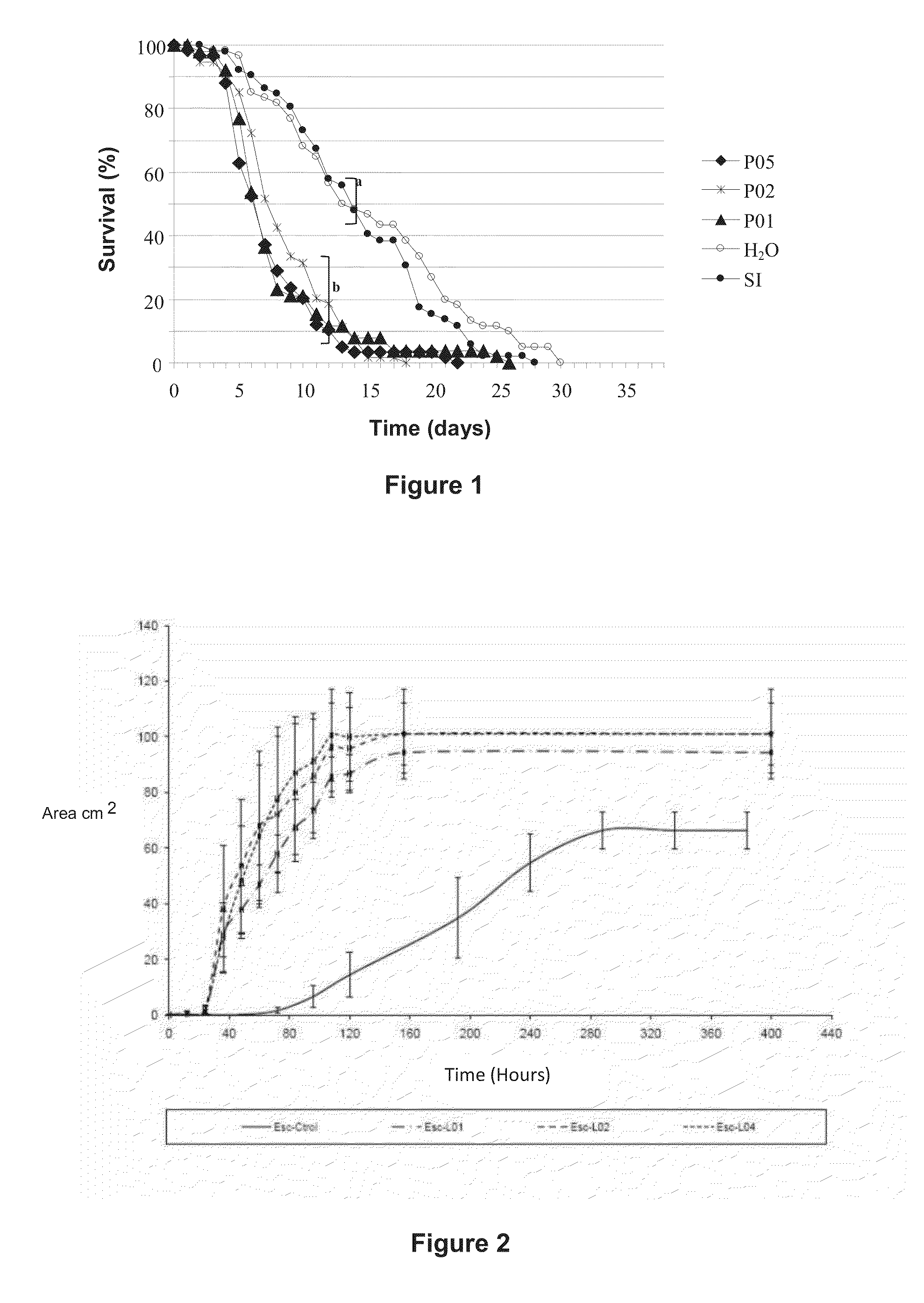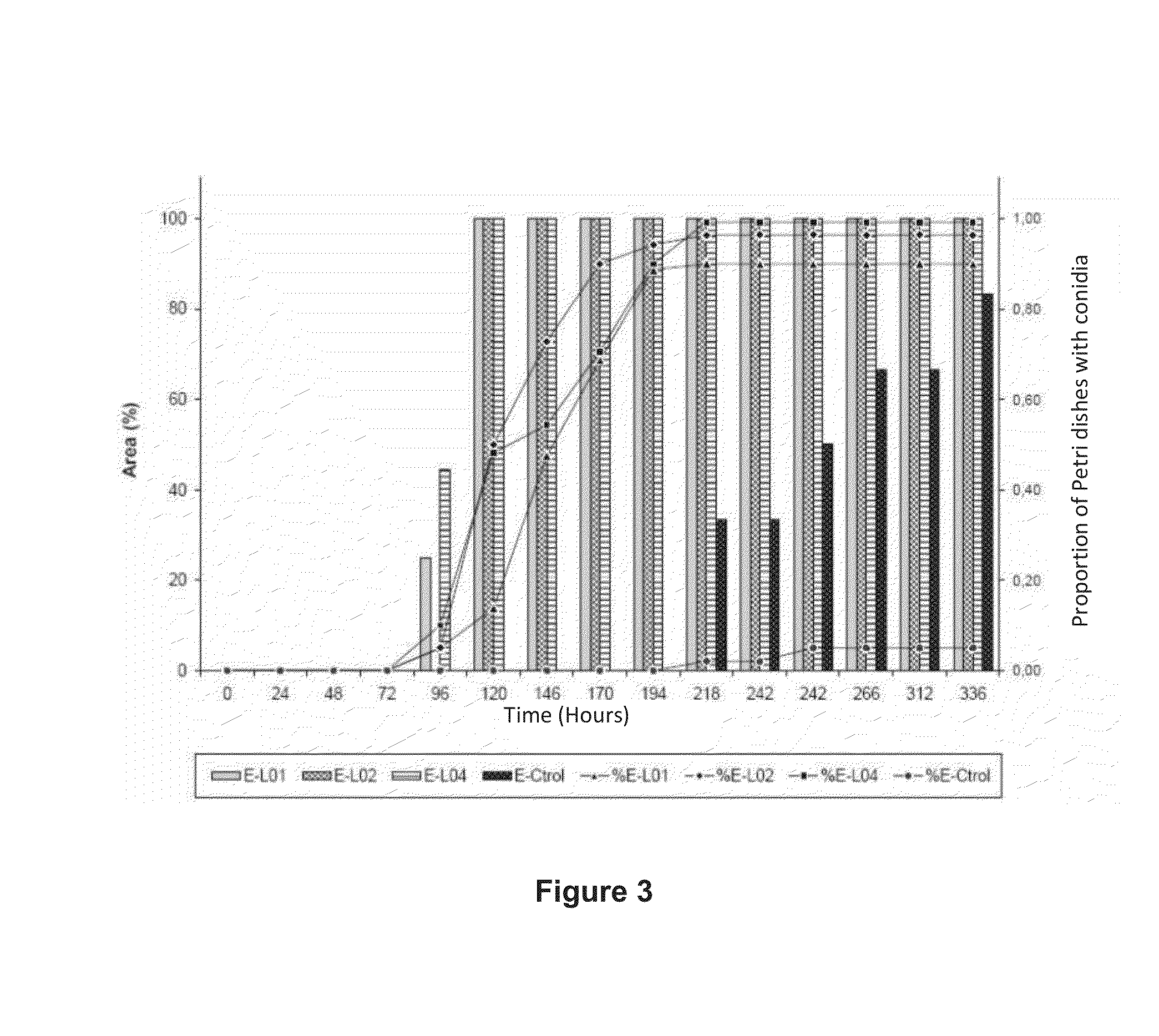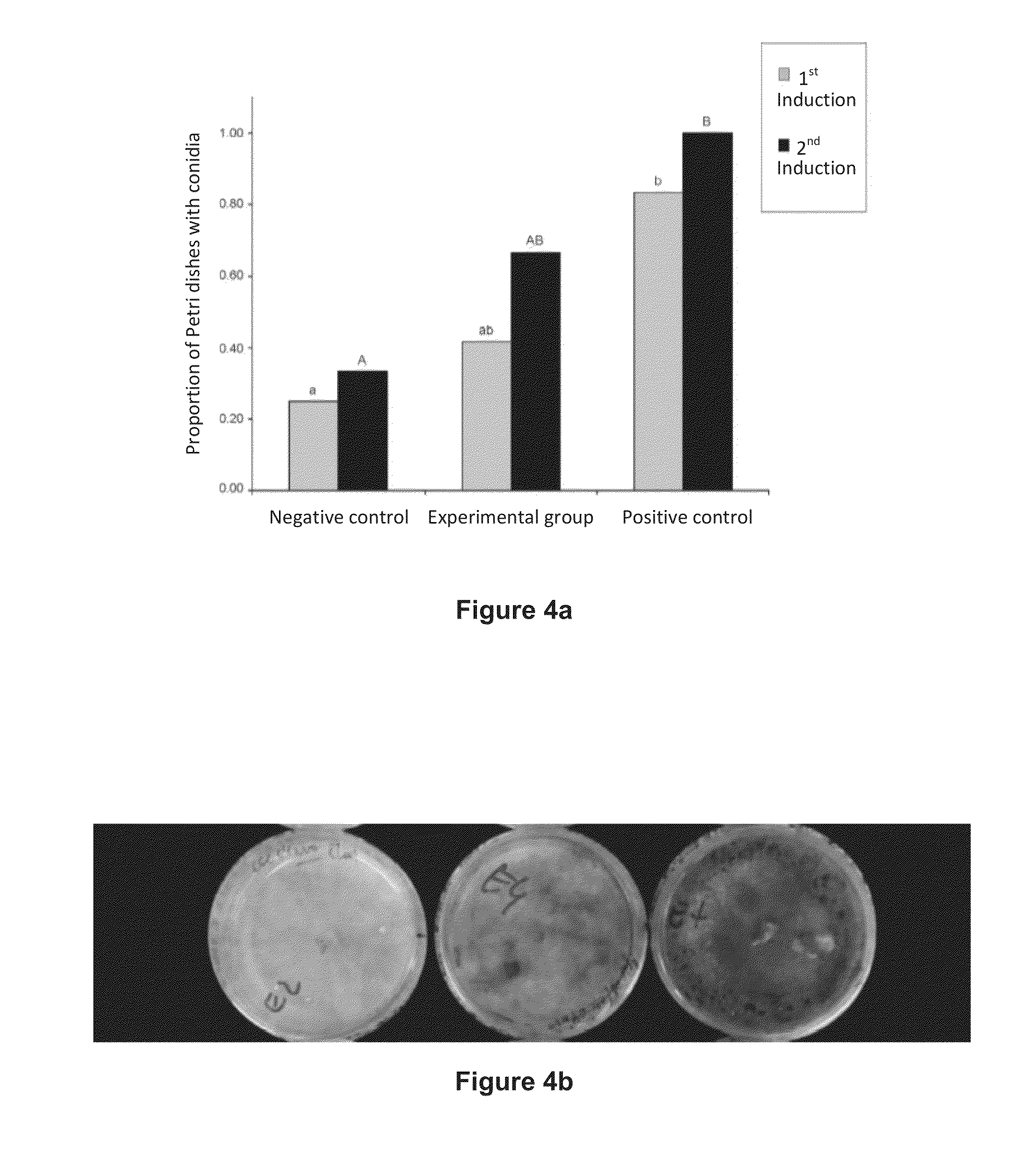Methods for controlling leaf-cutting ants
- Summary
- Abstract
- Description
- Claims
- Application Information
AI Technical Summary
Benefits of technology
Problems solved by technology
Method used
Image
Examples
example 1
Obtaining of Entomopathogenic and Mycopathogenic Fungi
[0075]From leaf-cutting ant colonies in the field, the fungi Escovopsis weberii (from Acromyrmex lundii colonies), Purpureocillium lilacinum (from Acromyrmex lobicomis colonies), Trichoderma harzianum (from Acromyrmex striatus colonies) and Beauveria bassiana (from Acromyrmex lundii colonies) were isolated. For isolating Trichoderma harzianum and Escovopsis a minimal part of the material present in the surface of the garden where the ants cultivate the Leucoagaricus sp. was taken with the tip of a dissection needle and used to inoculate PDA (potato dextrose agar) medium supplemented with penicillin G and streptomycin (100 U / ml and 50 mg / ml, respectively). For obtaining the entomopathogens Purpureocillium lilacinum and Beauveria bassiana, specimens of Acromyrmex lundii that were walking in the colony paths were collected. At the lab, the ants were individually put in a wet chamber, which consists in a small chamber containing a pa...
example 2
Obtaining of Conidia Starting Stock
[0076]Production of conidia was carried out according to the methods described in Manual of techniques in insect pathology (Lacey L. A. 1997. Academic Press, London Lacey, 1997). Briefly, for Purpureocillium lilacinum, Trichoderma harzianum, Escovopsis weberii and Beauveria bassiana conidia production, Petri dishes with PDA were inoculated with small portions taken with an inoculation loop from frozen-stored samples obtained in the Example 1, and pure cultures were grown for 7 days. After this period of time, micelia with conidia were extracted and put into a Falcon tube with 30 ml of Tween 80 0.01 v / v. It was agitated by vortex until a homogeneous solution was obtained. From 1 ml of this solution serial dilutions were performed until obtaining a conidia concentration of between 6 and 6.5×107 conidia / ml, as measured with Neubauer chamber. The solution was immediately used.
example 3
Activity of P. lilacinum on A. lundii Ants
[0077]Acromyrmex lundii ants were subjected to three different treatments. One group of 60 ants, per each of the 6 colonies, was immersed for 10 seconds in a suspension of P. lilacinum conidia (isolations P01, P02 and P05) in water at a concentration of 1×10s conidia / ml. A second group was immersed in water alone, and a third group was not subjected to immersion. Survival of ants on each group was recorded. As it can be seen in FIG. 1, ants exposed to the suspension of P. lilacinum conidia showed a survival rate significantly lower than that shown by controls with water alone and with no water. In 10-12 days almost all ants treated with the conidia suspension were dead, with P. lilacinum explaining 70% of the deaths.
PUM
| Property | Measurement | Unit |
|---|---|---|
| Time | aaaaa | aaaaa |
| Time | aaaaa | aaaaa |
| Time | aaaaa | aaaaa |
Abstract
Description
Claims
Application Information
 Login to View More
Login to View More - R&D
- Intellectual Property
- Life Sciences
- Materials
- Tech Scout
- Unparalleled Data Quality
- Higher Quality Content
- 60% Fewer Hallucinations
Browse by: Latest US Patents, China's latest patents, Technical Efficacy Thesaurus, Application Domain, Technology Topic, Popular Technical Reports.
© 2025 PatSnap. All rights reserved.Legal|Privacy policy|Modern Slavery Act Transparency Statement|Sitemap|About US| Contact US: help@patsnap.com



